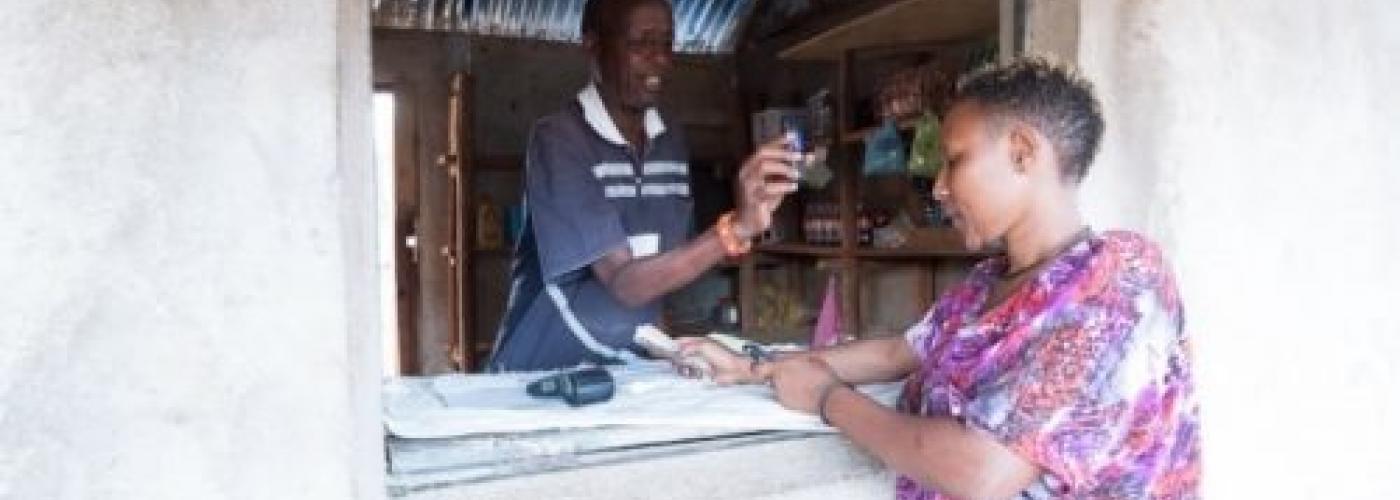Last Mile Financial Inclusion: What Will It Take to Reach More Rural Women?
Image

This post originally appeared on the SEEP blog and was written by Kathleen Colson, Blandina Kilama, and Sarah Gammage.
Digital services, with their geographic reach, ease of use, and transparency, are driving financial inclusion and alleviating poverty. But are rural women being left behind?
Financial inclusion is unlocking the potential for micro- and small enterprises in poor and rural communities to grow as well as reducing gender inequalities. Women with access to financial services including bank accounts and savings mechanisms are better able to control their earnings and make personal and productive expenditures. Improved financial inclusion may give women more choice in how they use their time, whether for employment, leisure, or education, and foster more substantive autonomy in decisions ranging from employment and marriage, to using contraception. Financial services can help women grow their businesses, choose where and how to work, and raise their productivity and earnings.
The Gender Gap in Financial Inclusion
Conventional financial products and services still do not reach many poor women, especially in so-called “last mile” rural locations. According to the 2014 Global Findex data, only 57 percent of women worldwide have a financial account, compared to 64 percent of men. The gap widens as you go down the income ladder: poor women are 28 percent less likely than poor men to have a formal bank account. Further, the International Financial Corporation estimates that over 70 percent of women-owned small and medium enterprises (SMEs) have inadequate or no access to financial services.
New, low-cost digital platforms present opportunities to extend meaningful financial inclusion for the rural poor. Financial service providers are debuting innovative digital services with the potential to overcome challenges of geography, reduce transaction costs, and increase transparency and therefore trust in financial systems. Users’ privacy and financial autonomy are enhanced with digital products and platforms, which help reduce the risk of having funds diverted or appropriated by others.
Is Digitization Enough?
Yet digitization of financial services alone is not enough to improve the lives of low-income women in rural communities. Our work in Tanzania and Kenya shows that despite the fast spread of mobile money and other digital services in urban areas, significant barriers remain for poor, rural women with low literacy rates to uptake and use the services. To expand the reach of digital inclusion platforms, we need interfaces that work for women with low literacy, and investments in information and training to help women use the newest products. Knowledge of financial services and key concepts of interest, debt and surplus is fundamental, along with user-friendly technology.
Learning at #SEEP2017
At the upcoming SEEP conference, the BOMA Project and REPOA, in partnership with ICRW, will share learnings from research and interventions in gender and financial inclusion funded by the Bill and Melinda Gates Foundation. Our session will highlight strategies, capacity-building, and product design innovations that are relevant to the broader development community. Meaningful financial inclusion and the reduction in poverty it can bring demands attention to both access to and use of financial products and services. Much work remains to be done in addressing the gender gap and the disproportionate exclusion of rural women from digital financial options and opportunities.
Kathleen Colson is the Founder & CEO of the BOMA Project, Blandina Kilama is a Senior Researcher with REPOA, and Sarah Gammage is the Director of Economic Empowerment and Livelihoods at the International Center for Research on Women.

